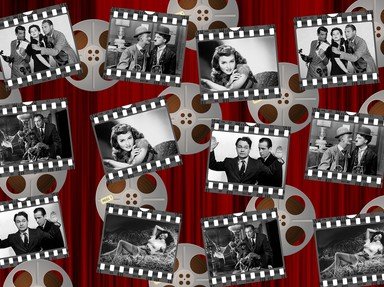Quiz Answer Key and Fun Facts
1. The oldest film presented during the first season of "The Essentials" was a 1932 Paul Muni drama based on the real-life story of Robert Burns, a WWI veteran sentenced to hard labor following a petty robbery. Which Academy Award nominated film was it?
2. Only one musical from the 1930s was included on the first season of "The Essentials". Released in 1935, which Astaire-Rogers comedy was the most successful of their partnership?
3. The first season of "The Essentials" featured two comedies from the 1930s. One was 1939's "Ninotchka"; the other was which 1935 Marx Brothers' classic with Kitty Carlisle?
4. The first season of "The Essentials" included eleven films from the 1940s, three of which starred Humphrey Bogart. Besides "The Maltese Falcon" (1941) and "The Treasure of Sierra Madre" (1948), which 1942 classic film co-starring Claude Rains and Ingrid Bergman, was also featured?
5. James Cagney appeared in two of the films highlighted in the first season of "The Essentials". One was 1949's "White Heat"; the other was which 1942 musical based on the life of George M. Cohan?
6. The first season of "The Essentials" showcased eleven films from the 1950s, including two from Alfred Hitchcock. One was 1954's "Dial M for Murder". The other film was which 1959 Cary Grant and Eva Marie Saint thriller?
7. Only one musical from the 1950s was included in the first season of "The Essentials". Which 1952 Gene Kelly classic about the transition from silent to talking pictures was it?
8. Two of the eight films from the 1960s that were featured in the first season of "The Essentials" were trial films. One was 1962's "To Kill a Mockingbird". The other was which 1960 fictional account of the Scopes "Monkey" Trial?
9. Peter Sellers only appeared in one film included in the first season of "The Essentials", but he played three characters in it. Which 1964 Stanley Kubrick black comedy was it?
10. The only film from the 1970s to be included in the first season of "The Essentials" was a low-budget sports drama that won the Best Picture Academy Award in 1976. Which film was it, which also received Best Actor and Original Screenplay Academy Award nominations for its star?
Source: Author
PDAZ
This quiz was reviewed by FunTrivia editor
spanishliz before going online.
Any errors found in FunTrivia content are routinely corrected through our feedback system.

